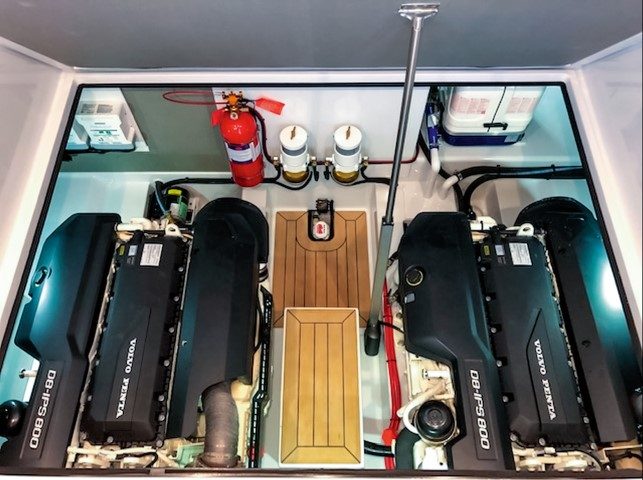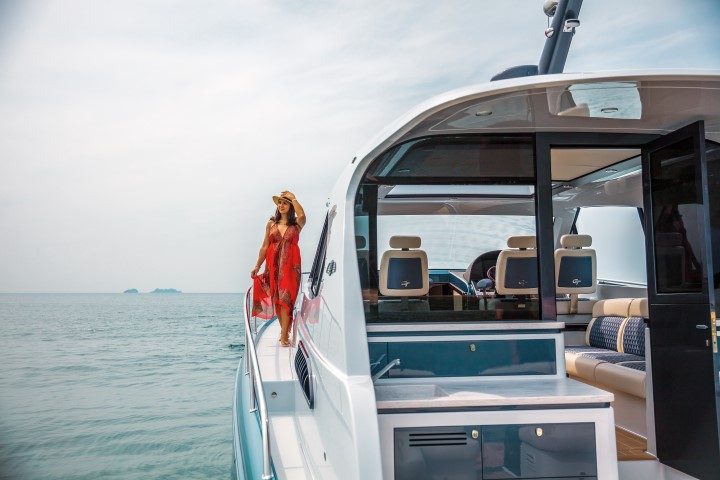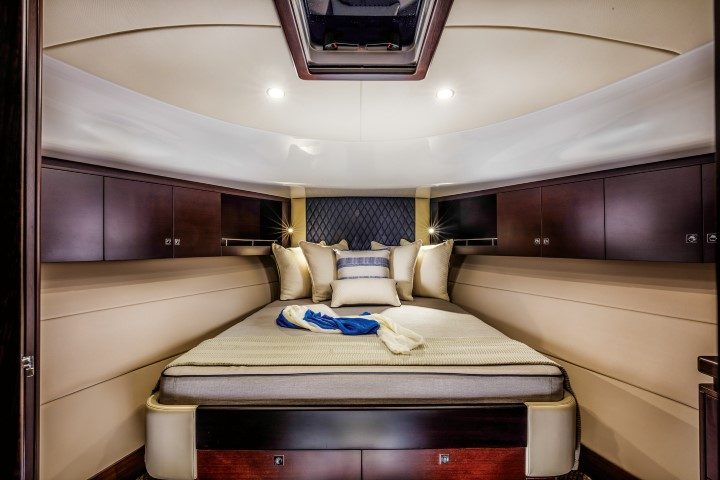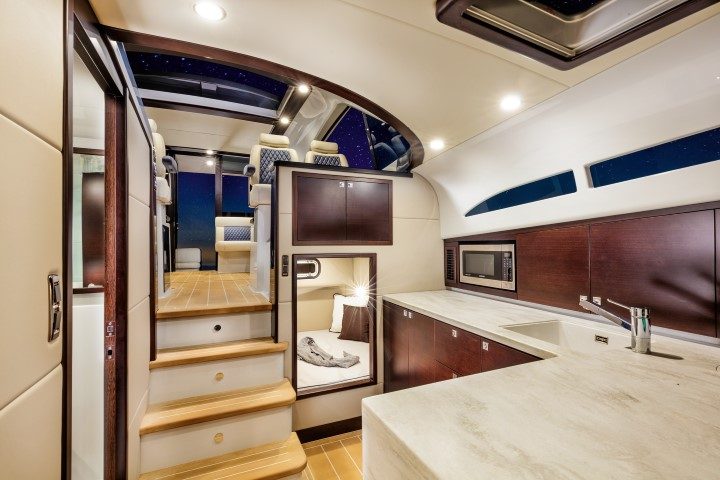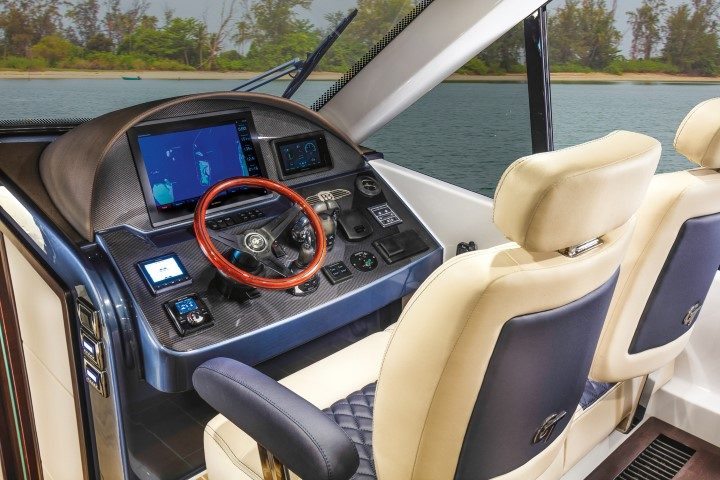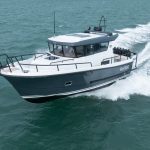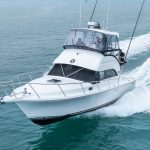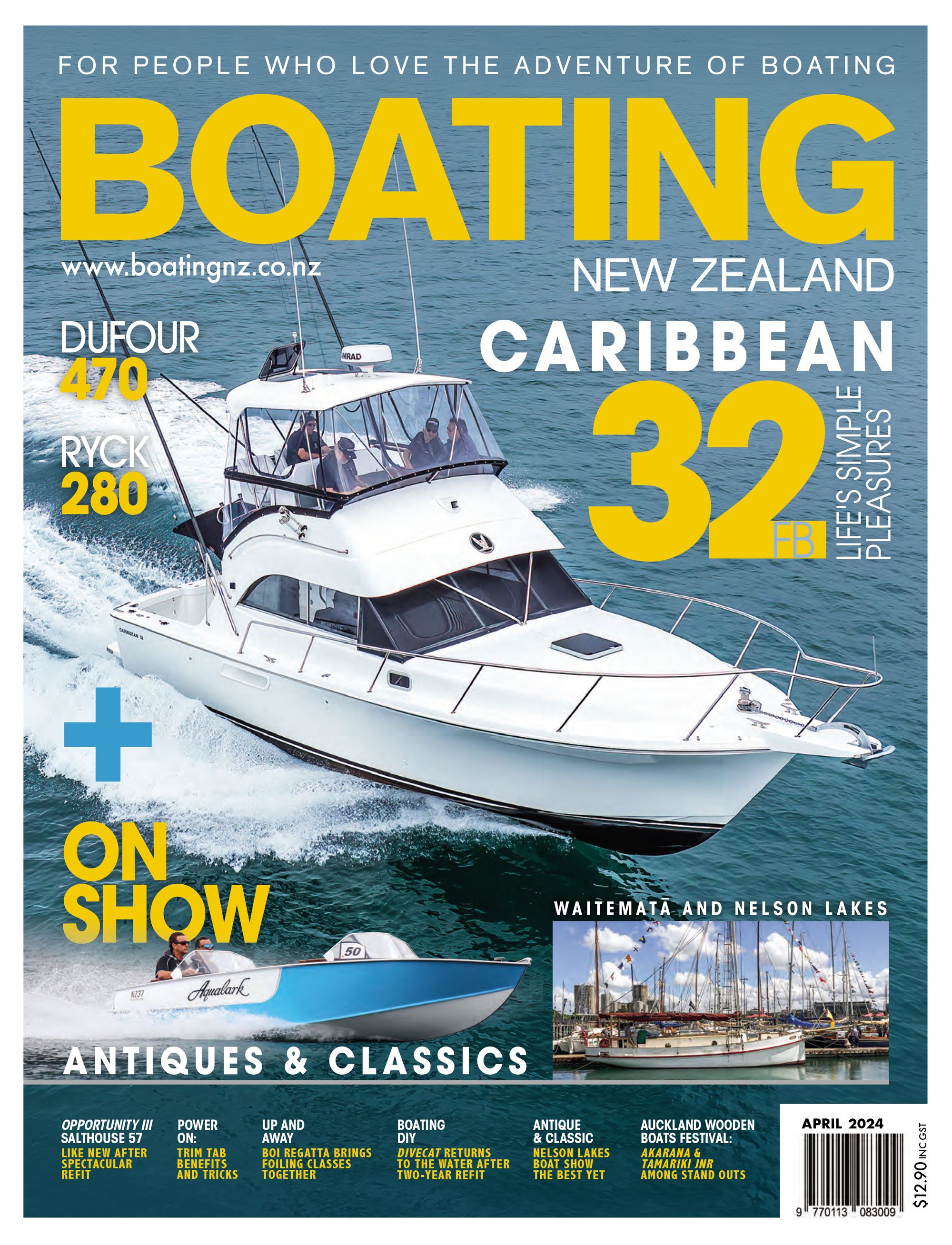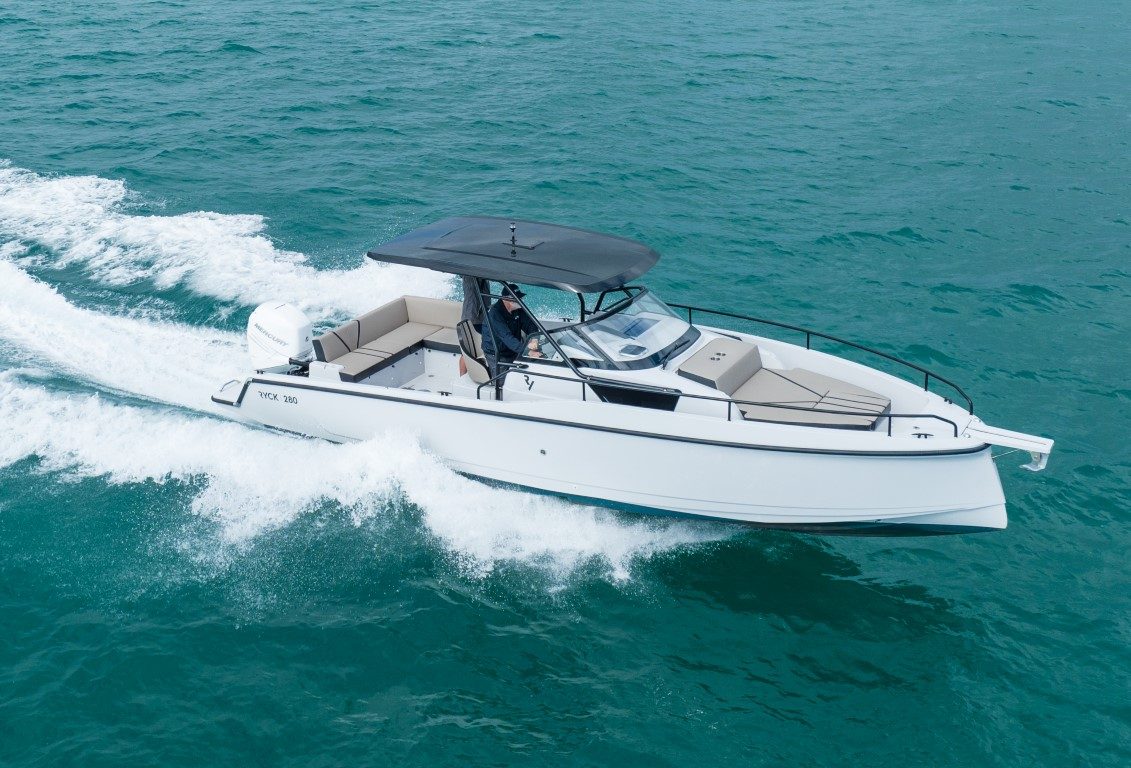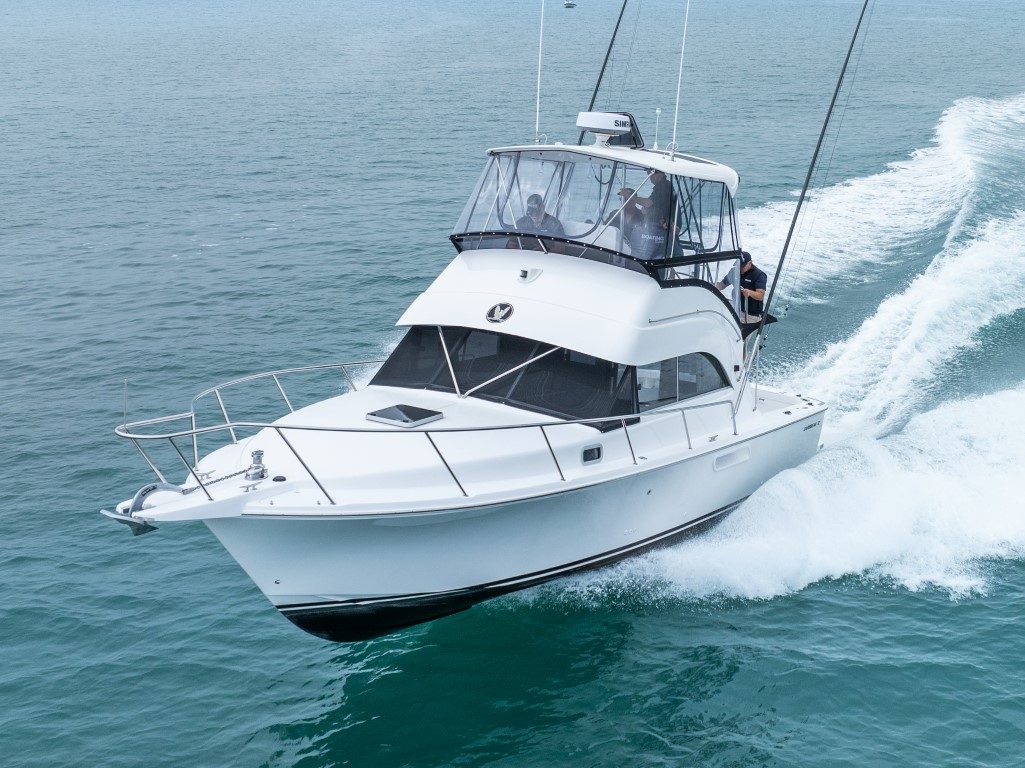She feels really easy and comfortable to sail, even in a good breeze and a chop.
- Superb blend of classic styling and modern design
- Precision handling with joystick control
- Light weight and excellent trim balance gives good performance
- A driver's boat with a simple but stylish interior



